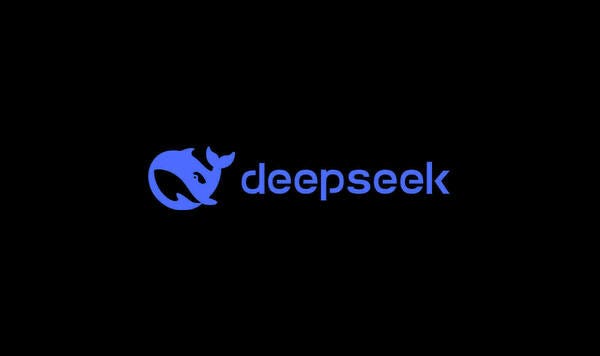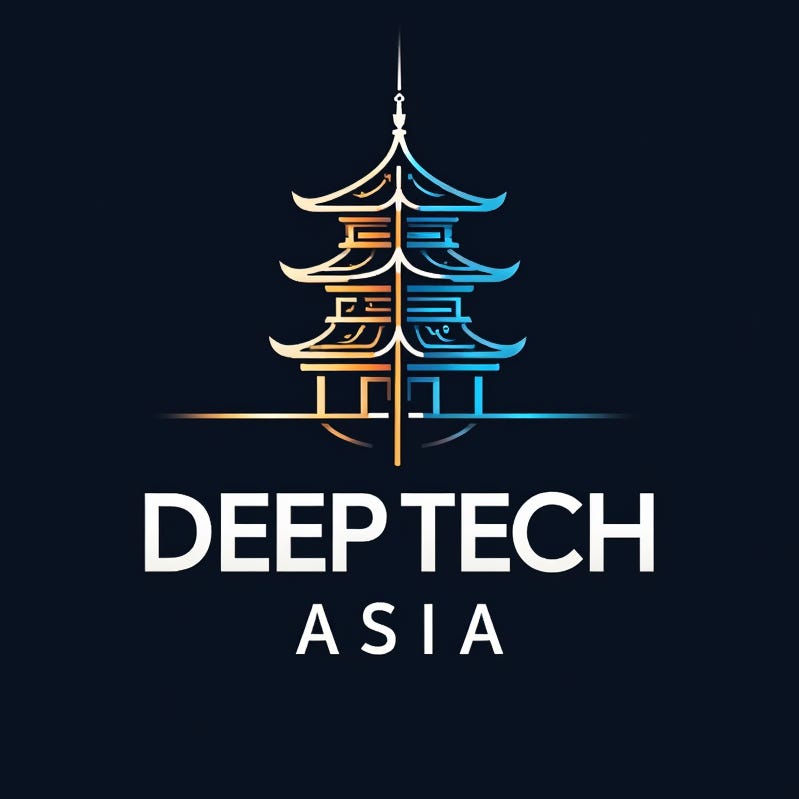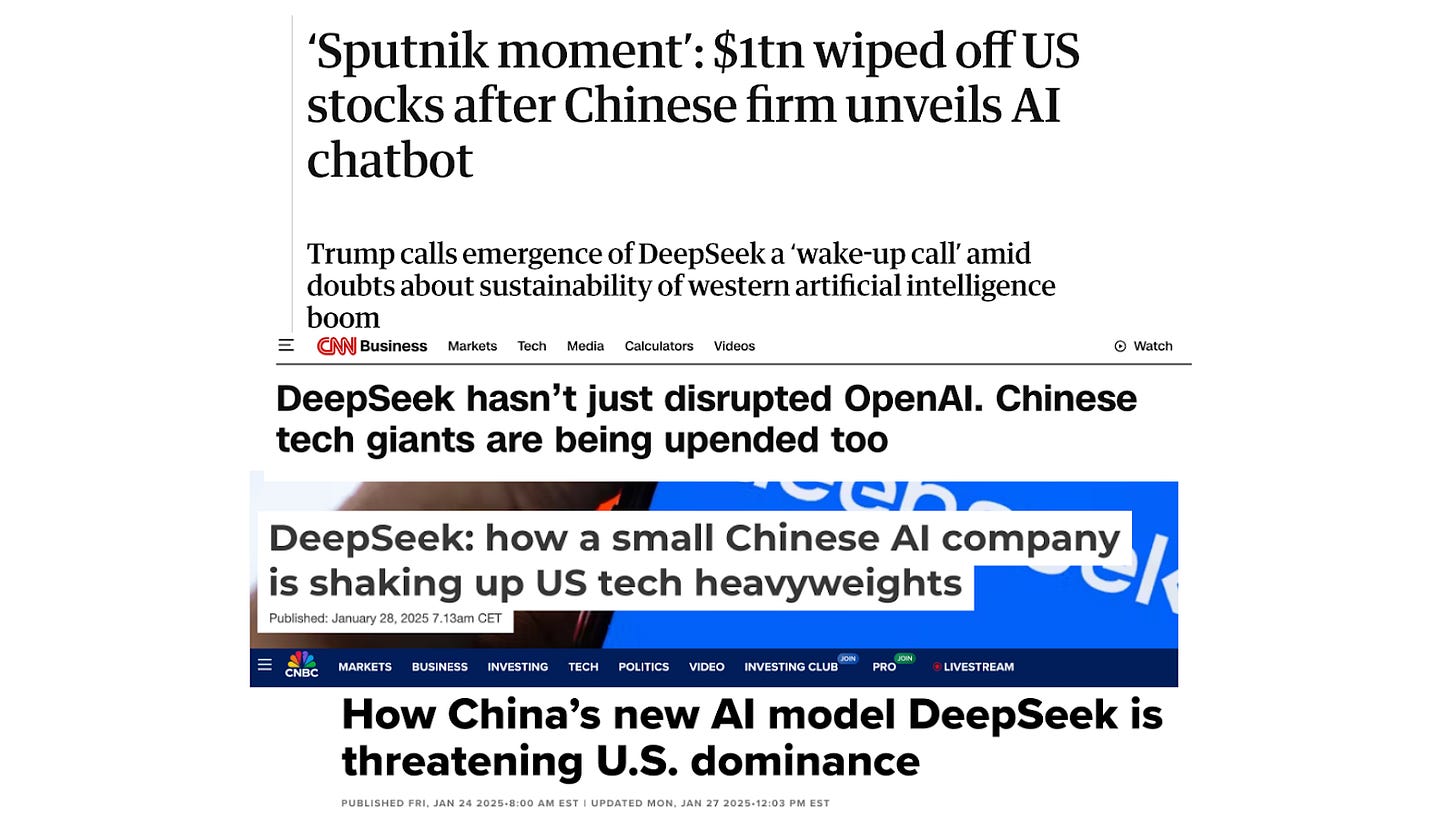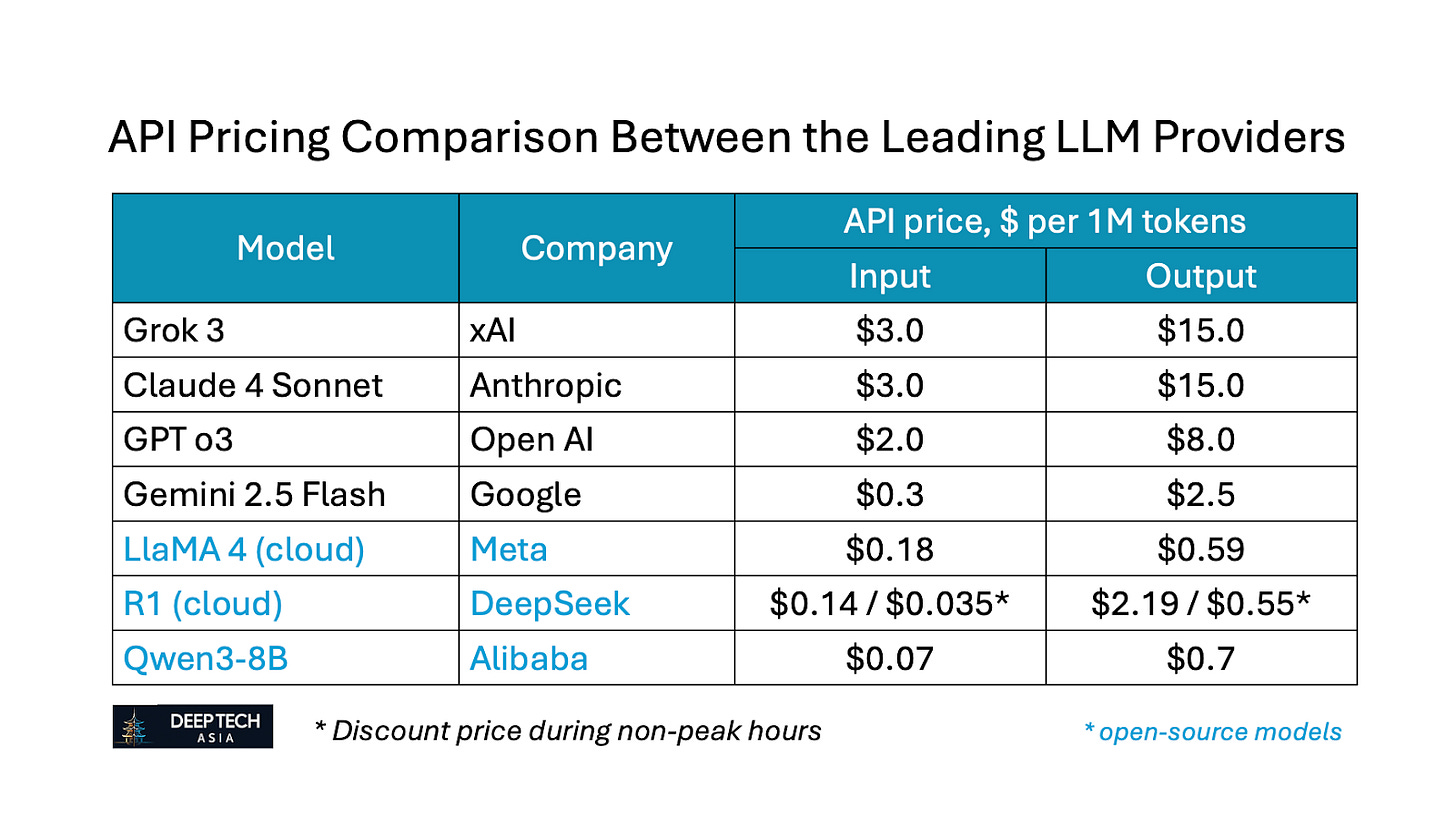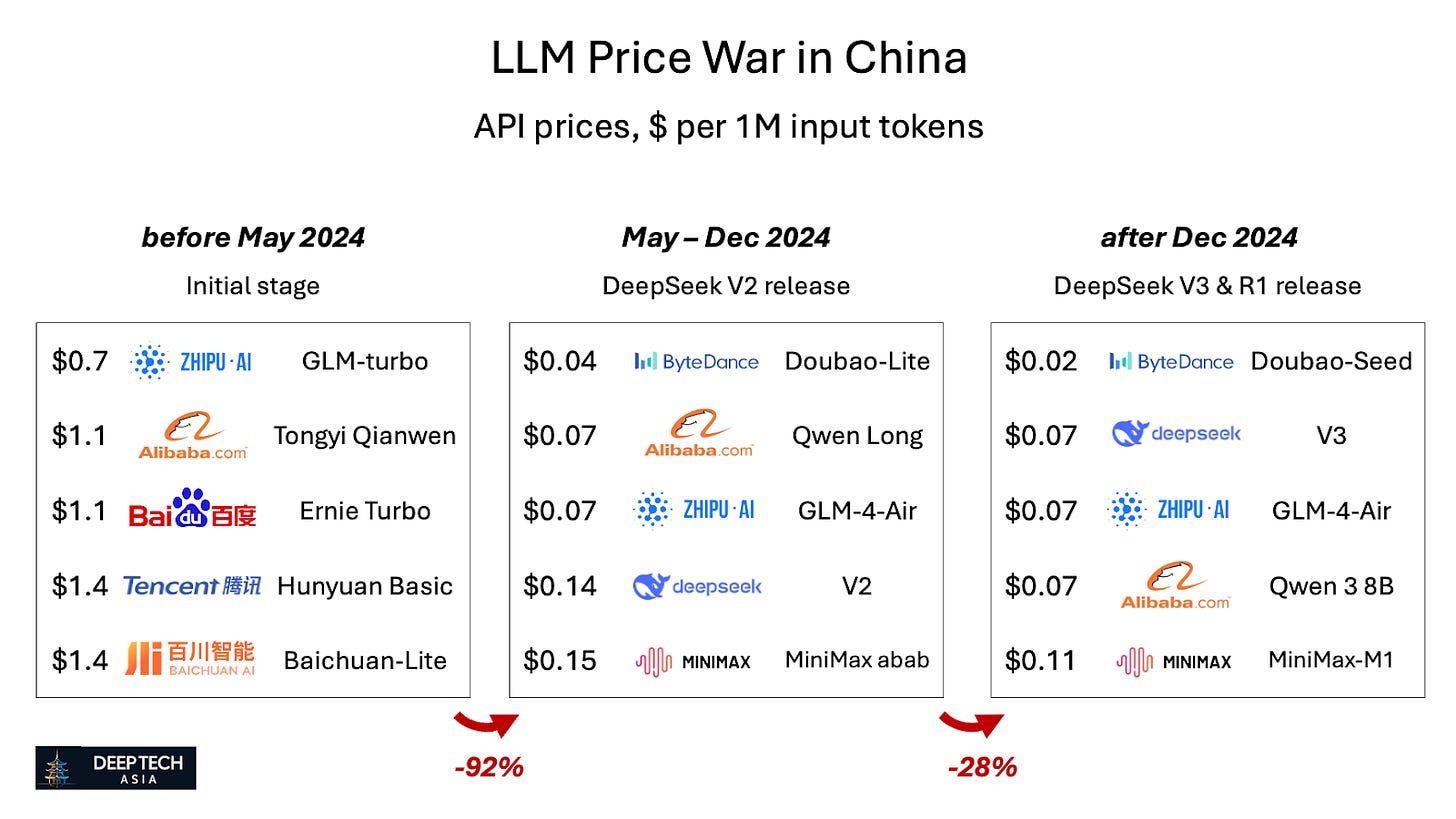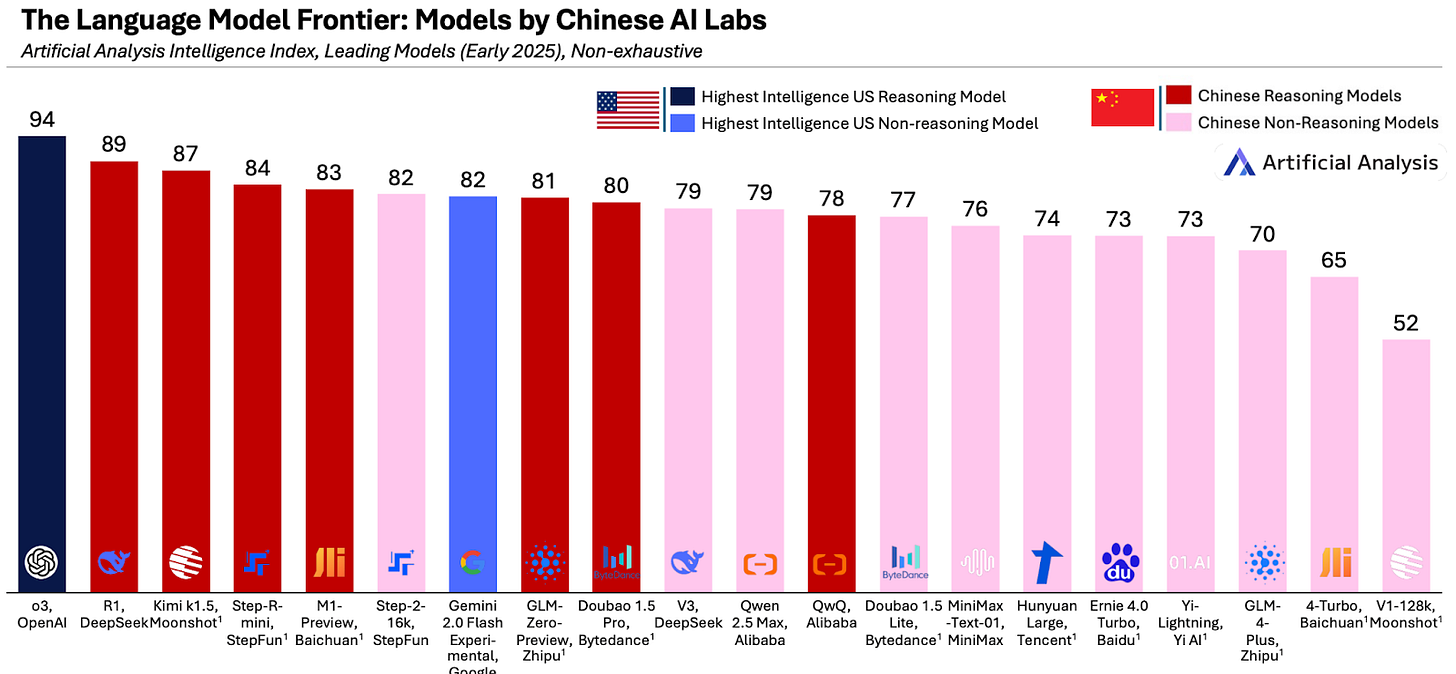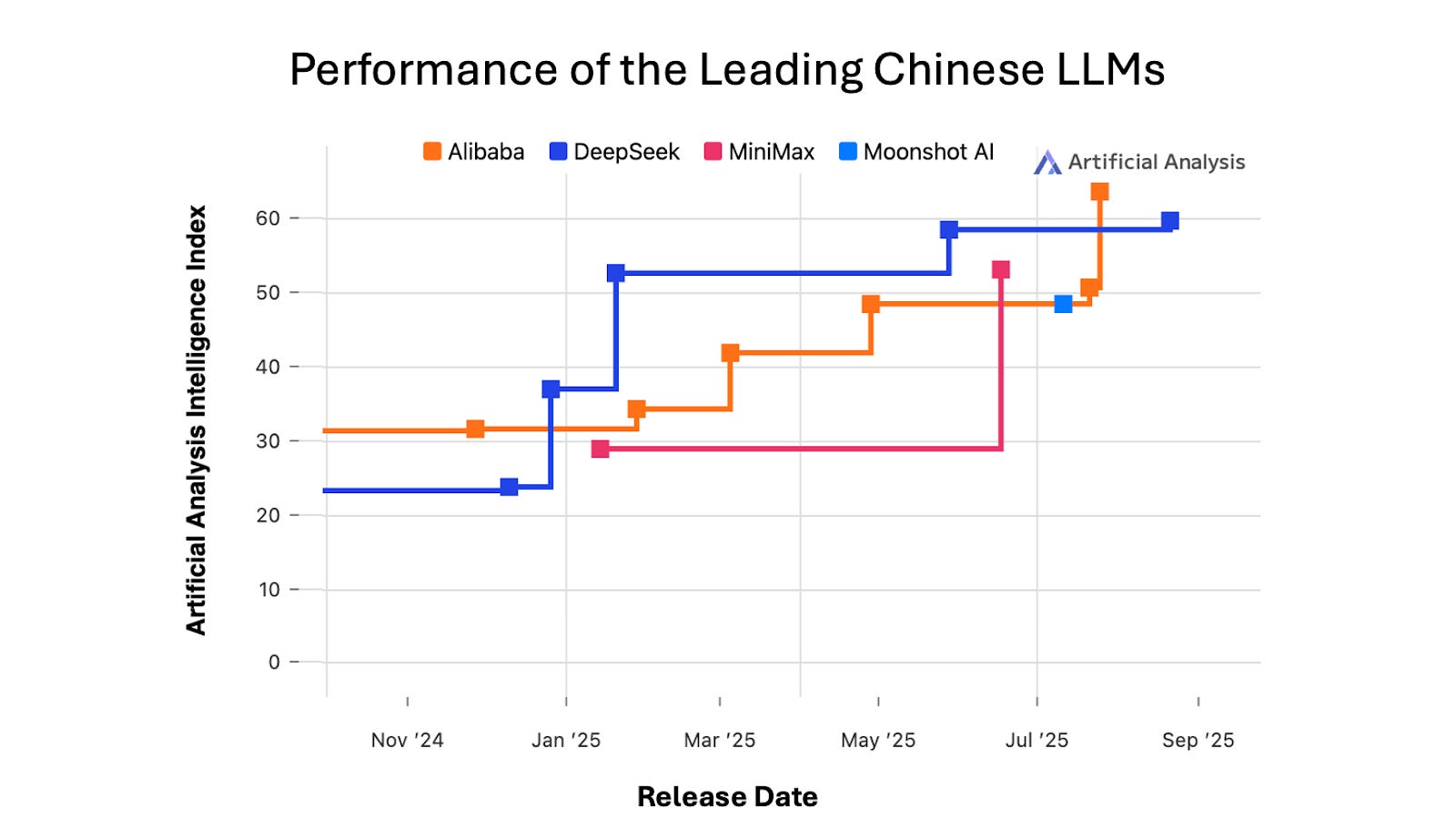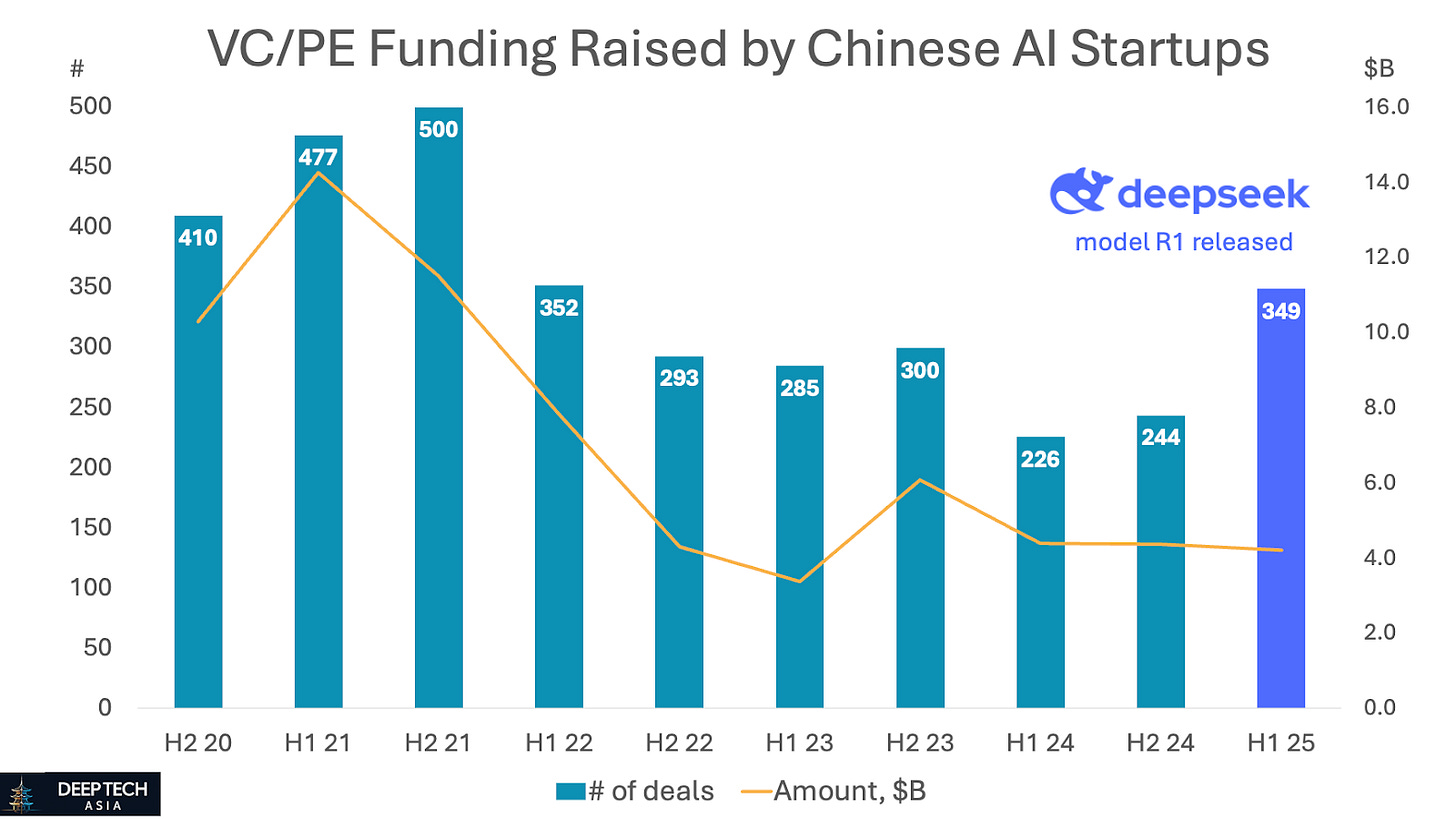Was DeepSeek Such a Big Deal?
This article cuts through the media noise around DeepSeek and offers a clear, fact-based analysis of its long-term impact on global AI, open-source, China’s AI, NVIDIA, and beyond.
On August 13th, 2025 we learned that the much anticipated DeepSeek-R2 model would be delayed reportedly due to unsuccessful attempts to train it on Huawei’s AI chips instead of those of Nvidia, according to the Financial Times.
If you enjoy the topic of this article, why not share it with a friend.
Previous articles on DeepSeek
🌊 China’s DeepSeek AI Shakes Up the Game (January, 2025)
Is DeepSeek the new DeepMind? (January, 2025)
In the Wake of DeepSeek: What Does it Mean For China’s ByteDance, AI Four Dragons and Six Tigers? (March, 2025)
Denis Kalinin (https://substack.com/@kalinindenis) of DeepTech Asia (www.deeptech.asia) Newsletter explores the latest trends in AI, robotics, new energy, computing and space. His writing focuses on emerging innovation and investment trends across Asia, with a particular emphasis on China. Denis also works as the Head of APAC at a deep tech VC firm Runa Capital. With a M.S. from University for International Business and Economics in Beijing and exchange program experience at Free University of Berlin, Denis was based in Singapore for a time.
Why is DeepSeek generally considered important?
DeepSeek is a significant player in the AI landscape due to its innovative approach to developing cost-efficient, high-performance, open-source AI models, challenging the dominance of Western tech giants and reshaping the global AI race.
Honorable mention (recommended reads related to our topic): Kyle Chan, Grace Shao, JS Tan, The Asianometry Newsletter, Poe Zhao, Kevin Xu, Ivy Yang, Jon Russell, Judy Lin 林昭儀, Tech Buzz China, Tony Peng, Lily Ottinger, Jacky Li, Rita Liao, Nathan Lambert, Jeffrey Ding, Ben Dickson, Edi Obiakpani-Reid, Jordan Schneider, Zichen Wang, Dean W. Ball, and so many others.
DeepTech Asia 🐉
Go Deeper into China & Asia Tech
This article was originally timed for a release with DeepSeek-R2, however since it has been delayed at least twice, we decided to share it early.
Was DeepSeek Such a Big Deal?
This article cuts through the media noise around DeepSeek and offers a clear, fact-based analysis of its long-term impact on global AI, open-source, China’s AI, NVIDIA, and beyond.
In January 2025, an unknown Chinese startup, DeepSeek, stunned the global tech community with the release of its R1 reasoning model—delivering breakthrough performance at a fraction of the typical training cost. This led to a record NVIDIA stock sell-off. Leading media outlets erupted with apocalyptic headlines predicting the downfall of OpenAI and the collapse of America's tech dominance.
Fast forward to early September 2025:
NVIDIA’s stock is up 22% from its “pre-DeepSeek: levels.
OpenAI not only survived – it raised another $40B in April 2025, marking the largest private tech funding round in history.
Other American AI players like xAI and Anthropic continue to attract billions in fresh capital too.
The launch of DeepSeek’s new R2 model has been repeatedly delayed — originally planned for May, it still has no confirmed release date.
So, was DeepSeek truly as revolutionary as the media portrayed it seven months ago — or was it simply a hype-fueled moment of panic?
In this article, we examine the real long-term consequences of DeepSeek for AI infrastructure and applications, both in China and around the world—separating the media frenzy from DeepSeek’s actual impact.
DeepSeek vs Global AI
When DeepSeek R1 was released, there was an expectation that major LLM companies like OpenAI, xAI, Anthropic and others would re-consider their existing strategies, considering that companies like DeepSeek can train AI models as good as OpenAI, but at a fraction of the cost.
Moreover, DeepSeek’s models are fully open-source, so now anyone can adjust their architectural innovation and training techniques to make their models as efficient and powerful as DeepSeek.
However, Anthropic expects to burn ~$3B in 2025, xAI – $13B and OpenAI more than $14B.
It was widely expected that DeepSeek would trigger a price war in the global LLM market—after all, its models launched at 50–100x lower prices than those of OpenAI, xAI, and Anthropic. But are these companies burning billions just because they were forced to slash prices?
As the chart below shows, LLM prices have indeed declined since January 2025, but this trend began before DeepSeek at the beginning 2024. DeepSeek just accelerated it.
Even after these reductions, the leading global LLM providers still charge 14–15x more than DeepSeek for its APIs (see table below).
Why hasn’t DeepSeek disrupted the business model of global LLM providers?
Product development cost. DeepSeek remains laser-focused on research, raw model performance, and the long-term pursuit of AGI—rather than building tailored products for specific industries or use cases. In contrast, companies like OpenAI and xAI are pursuing a dual strategy: pushing the frontier of model development while also investing heavily in security features, multimodal capabilities, user experience, ecosystem integrations, and industry-specific applications in fields like healthcare, finance, and law.
Innovators vs followers. DeepSeek and other Chinese LLMs are still in catch-up mode when it comes to matching OpenAI’s performance. However, the path to achieving comparable results more efficiently—particularly through techniques like model distillation—demands significantly fewer resources than pushing the boundaries of frontier research.
Extra deployment costs. Most global companies are expected to adopt the open-source version of DeepSeek, rather than its cloud-hosted offering on Chinese infrastructure—primarily due to concerns around data privacy and regulatory compliance.This raises a key question: Is the total cost of deploying and running an open-source model truly lower than that of using closed-source alternatives—especially at scale, with growing inference volumes? Several recent analyses (e.g. here) explore this trade-off in greater detail.
Geopolitics and privacy. DeepSeek’s global market share remains small—currently under 2%. As noted earlier, its cloud-hosted version is generally not considered a viable option for international customers due to privacy and data sovereignty concerns. Even when self-hosting the open-source version is technically and economically feasible, many Western companies remain hesitant, largely due to the perception risks of using a Chinese-developed AI model.
When I surveyed European startups for a comment to Sifted.eu, several asked to remain anonymous—not because of technical limitations, but because they feared potential backlash from customers, despite running the model entirely on local infrastructure.
Impact on open source
In my view, DeepSeek’s biggest long-term impact will be on the global open‑source LLM ecosystem.
On one hand, its rise has pushed previously closed players toward open source. We’ve already seen this in China, where giants like Alibaba and Baidu opened parts of their models, and globally with OpenAI releasing its first open-source model, gpt‑oss.
On the other hand, DeepSeek has raised the stakes for existing open-source developers like Meta’s LLaMA and Mistral. Competition is heating up fast. As Kevin Xu suggested in a recent Substack post, Meta’s next AI model may move away from full open-sourcing, and I tend to agree.
Looking purely at performance, pricing, and speed to market over the past year, it’s hard to see why customers would opt for self-hosted versions of LLaMA or Mistral over DeepSeek or Qwen—unless there’s a strong institutional preference to avoid Chinese technology, as is often the case in sectors like government, defense, or finance.
The growing adoption of DeepSeek among B2B users is also reflected in the rising token consumption on third-party hosting platforms.
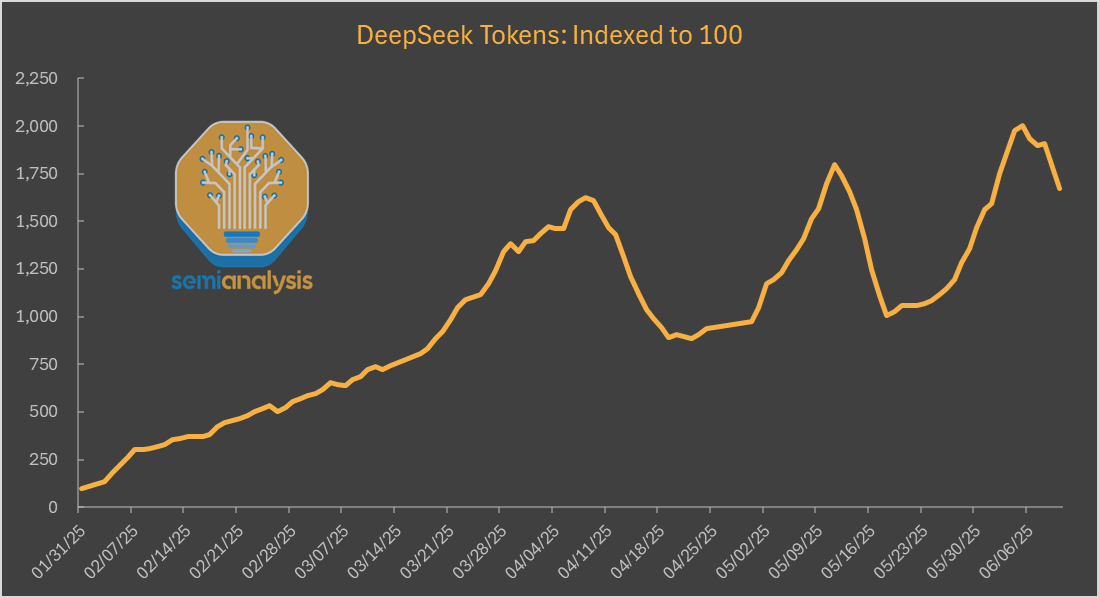
II. DeepSeek vs Chinese AI
So far, DeepSeek’s impact has been far more profound within China than on the global AI ecosystem.
China is home to over 200 companies developing their own LLMs, including major tech giants such as Alibaba, Tencent, Baidu, and Bytedance. Alongside them, a new wave of next-generation AI startups—often referred to as the “Six Tigers”—has emerged with a singular focus on advancing frontier LLMs. These include Zhipu AI, Moonshot AI, Baichuan, Stepfun, Minimax, and 01.ai.
The first major shock came on May 6, 2024, with the release of DeepSeek-V2. Its API launched at just $0.14 per 1 million input tokens—a dramatic 5–10x lower than the prevailing market rates at the time.
This immediately triggered a price war. Alibaba quickly slashed the price of its Qwen model from $1.10 to $0.07 per million tokens, and just a week later, Bytedance entered the fray, launching its new model, Doubao, with an aggressively low entry price of $0.04 for the lite version.
By the time DeepSeek’s R1 and V3 models gained global attention in December 2024 and January 2025, the average price of LLMs in China had already fallen by 92% compared to May 2024. Following the R1 release, Chinese providers were forced to cut prices further—though the drop in early 2025 was less dramatic, averaging around 30%.
Source: DeepTech Asia. Based on [1], [2], [3], [4]
The response to DeepSeek’s aggressive pricing was far more intense in China than in the rest of the world — largely because, unlike OpenAI, xAI, or Anthropic, domestic AI companies viewed DeepSeek as a direct competitor. As I explored in my recent piece on China’s strategy for nurturing global champions, price wars are a familiar pattern across most Chinese industries — from solar panels and EVs to consumer electronics.
By January 2025, DeepSeek R1 had become the top-performing LLM in China, but rivals like Moonshot AI, Stepfun, and Baichuan were not far behind, creating a fiercely competitive domestic landscape.
Since January 2025, only Alibaba and Minimax have released new models that rival DeepSeek R1 in performance.
If 2024 was the year of AI price wars in China, then 2025 became the year of strategic pivots. Beyond DeepSeek, Alibaba, and Minimax, only a handful of players — such as Bytedance, StepFun, and Moonshot AI — chose to stay in the game of developing large, high-performance models, while many others began to scale back or refocus their efforts.
Source: DeepTech Asia. Based on [1], [2], [3], [4], [5], [6].
Zhipu AI is focusing on commercial traction through developing enterprise and consumer grade applications ahead of its upcoming IPO. Baidu and Tencent doubled down on integrations with DeepSeek and leveraging its extensive ecosystem. 01.ai started focusing on enterprise-grade solutions powered by DeepSeek, while Baichuan prioritized healthcare applications. Minimax, despite still heavily investing in its foundational model, leverages its video and image generating consumer applications.
I think all these pivots make a lot of sense. DeepSeek positions itself as a research-heavy infrastructure company, rather than a B2C customer facing app. And it clearly can’t do both, considering that the resources of its parent company are not as vast as OpenAI or Bytedance. That is why despite DeepSeek’s growing B2B adoption, its consumer web traffic is decreasing after riding the hype wave.
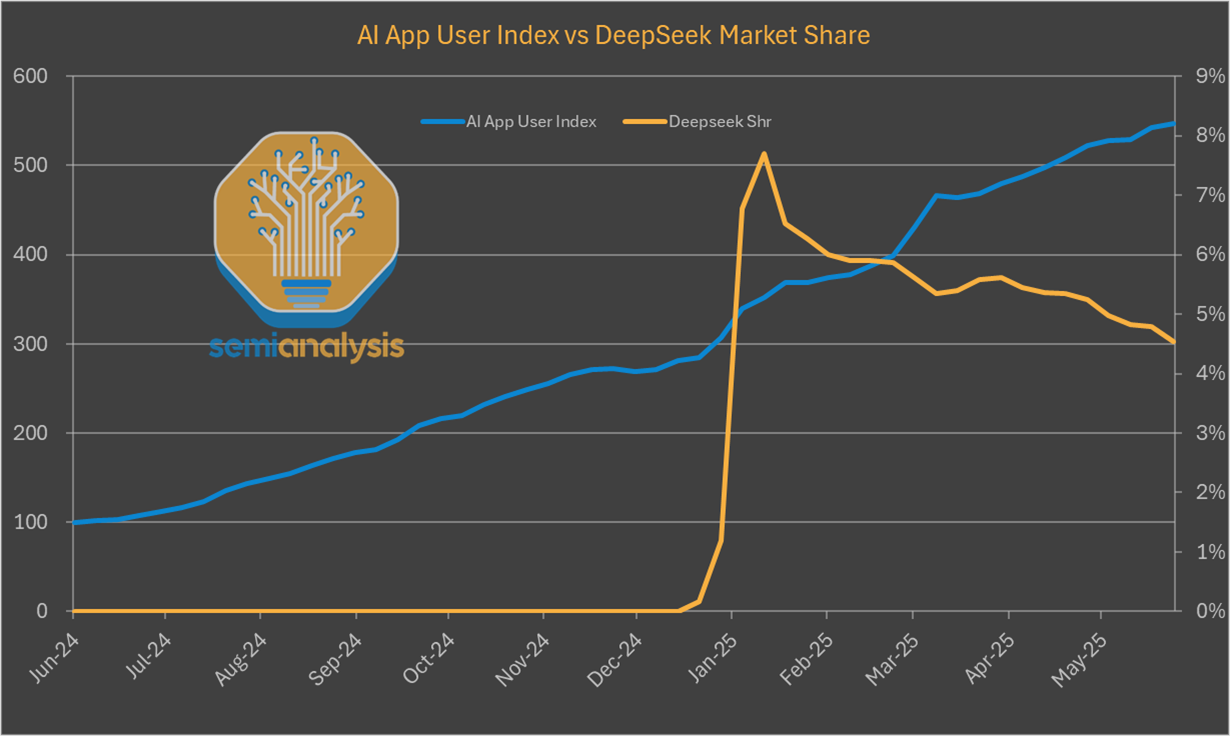
This level of specialization among Chinese LLM players stands in stark contrast to the global landscape, where leading providers like OpenAI, Anthropic, and xAI typically pursue end-to-end strategies—building both core infrastructure and industry-specific applications.
Another consequence of DeepSeek’s rise that I mentioned above is that it pushed many previously closed-source LLMs in China to adopt partially or fully open-source strategies.
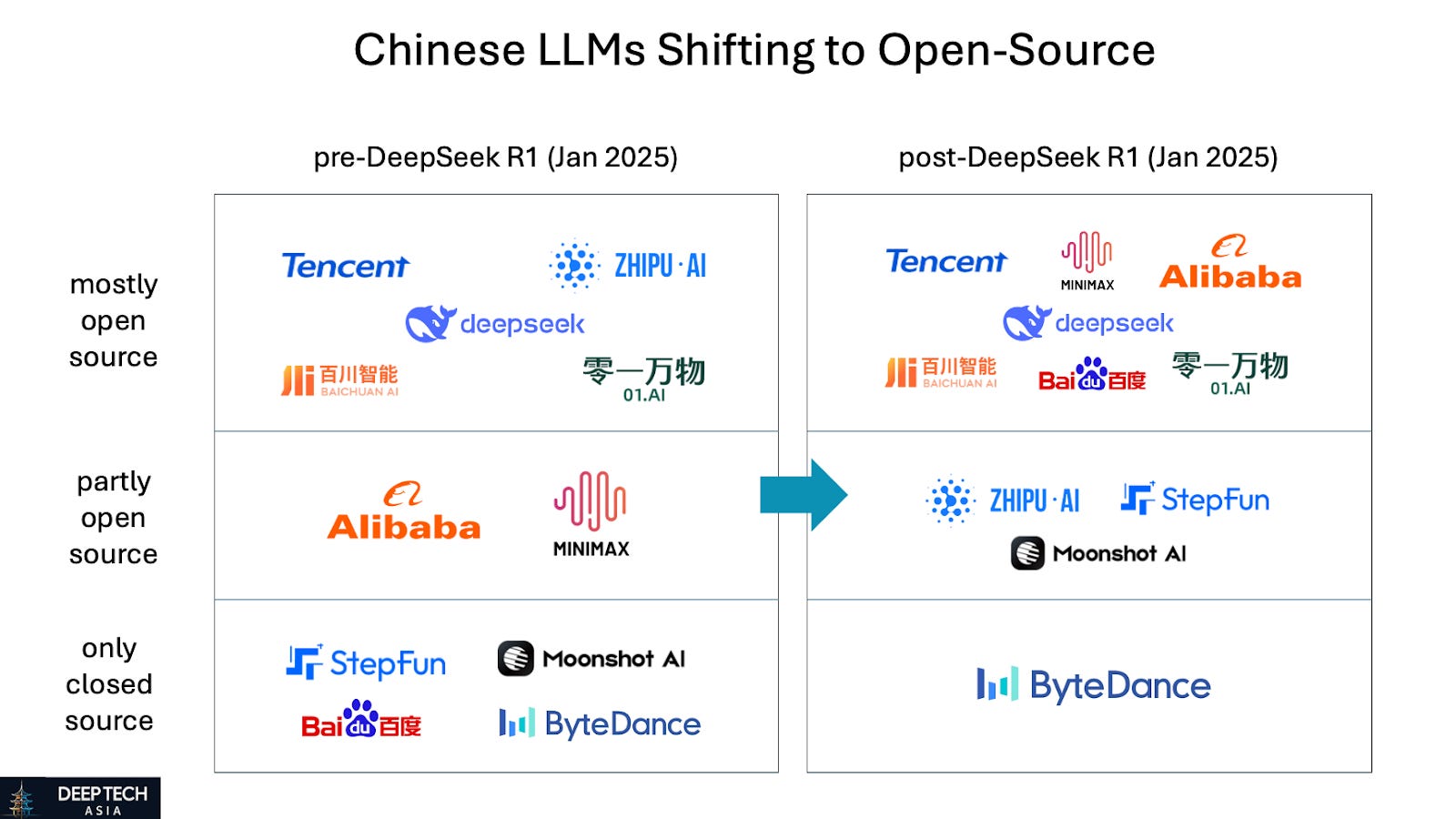
On one hand, DeepSeek has set a new industry benchmark by offering basic LLM infrastructure for free. On the other, intensifying competition in China is likely to push domestic LLM providers to expand globally. To succeed internationally, many of them will need to embrace open-source strategies, as discussed earlier.
In parallel, DeepSeek appears to have improved the overall perception of Chinese AI models—even outside China. For instance, I've observed a growing number of European startups adopting Alibaba’s Qwen, signaling a shift in sentiment and trust.
III. What Comes After DeepSeek
DeepSeek’simpact on Chinese companies building AI applications has also been profound — both directly and indirectly.
Lower infrastructure costs
The most immediate effect has been the LLM price war triggered by DeepSeek’s ultra-low pricing. Unlike their global counterparts, Chinese developers are not limited to open-source versions; they can leverage cloud-based LLMs at a fraction of the cost—a major advantage, especially given the complexities of self-hosting under current U.S. export restrictions.
This creates a unique cost advantage for Chinese AI developers, allowing them to build and scale more efficiently. However, it may also discourage international expansion, since low-cost LLM access is largely restricted to domestic users—or more precisely, to customers comfortable with Chinese cloud infrastructure handling their data.
Better funding environment
Over the past four years, Chinese AI startups have faced a tough funding environment, with venture and private equity investment in sharp decline.
Source: DeepTech Asia, based on ITjuzi
AI funding in China began to show signs of recovery in 2024—likely aided by falling infrastructure costs. However, the real momentum shift came in the first half of 2025, when the number of funding rounds by Chinese AI startups rebounded to levels not seen since early 2022. While the total capital raised hasn't grown significantly, this trend suggests a reallocation toward early-stage startups rather than continued concentration in already well-funded players.
In my view, the "DeepSeek moment" in January 2025 was a key catalyst. Its international breakthrough not only shifted the global narrative on Chinese AI, but also revived investor confidence in the broader ecosystem. Given how closely investor sentiment tracks media perception, DeepSeek’s global spotlight likely encouraged both domestic and international funds—including Temasek, Prosperity7, EQT, and even Benchmark—to re-engage with Chinese AI startups.
Flexible startup culture
DeepSeek is truly unique in its culture that is drastically different from many other tech companies in China like Bytedance or Alibaba. This topic was covered in much detail by JS Tan (here and here) and Jon from Asianometry (here), so I’ve just summarized their points below.
Source: DeepTech Asia, based on Value Added and Asianometry
The key takeaway is that DeepSeek’s founder, Liang Wenfeng, is challenging the conventional belief that Chinese companies need high-profile executives, massive teams, and grueling work culture to compete globally.
In many ways, DeepSeek operates more like a U.S. startup than a traditional Chinese one—emphasizing agility, creative problem-solving, and flexible execution over brute force and hierarchy.
Inspiration to go global
Bytedance was arguably the first “truly global” Chinese tech company, with TikTok reaching around 760 million monthly active users (MAU) in China and 1.8 billion MAU internationally. However, Bytedance was founded in 2012, and its global expansion only began in 2017 with the acquisition of Musical.ly. Its first product, the news app Toutiao, was entirely China-focused.
In contrast, DeepSeek has demonstrated that a Chinese company can be global from day one—not just in market reach, but also in technical competitiveness. It has contributed to a more positive global image of China’s tech ecosystem.
DeepSeek’s success with international users—amplified by strong global media coverage—encouraged other leading players like Manus and Minimax to target global markets early. While DeepSeek wasn’t directly responsible for their success, it undoubtedly helped legitimize their global ambitions and accelerated their credibility abroad.
In contrast to the US or Europe, most AI application startups in China that raised money in the first half of 2025 were hardware-related, developing either robots (Flexiv, Noematrix), drones (i-Kingtec, SkySys), autonomous vehicles (Zelos, Boonray, Yihang) or industrial solutions (Ensonic).
A wave of early-stage AI agent startups has emerged in China following DeepSeek’s breakthrough—many of them raising their first institutional rounds in 2025 and targeting global markets from day one. Companies like Shulex, WaveSpeed, and LynxAI are among this new cohort. I’m sure almost nobody outside of China has ever heard about them yet. Some of these companies might fail quickly, but the others may become the “next Manus”.
DeepSeek’s success has redefined the global ambition of Chinese startups, proving that it’s possible to compete internationally without raising billions or relying on government backing. In interviews, Liang Wenfeng has hinted that this very aspiration—to build a lean, globally relevant AI company from China—was one of his core motivations for starting DeepSeek.



